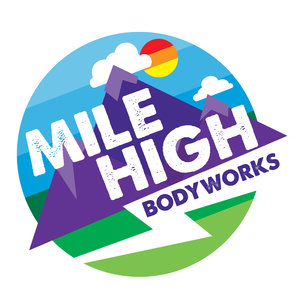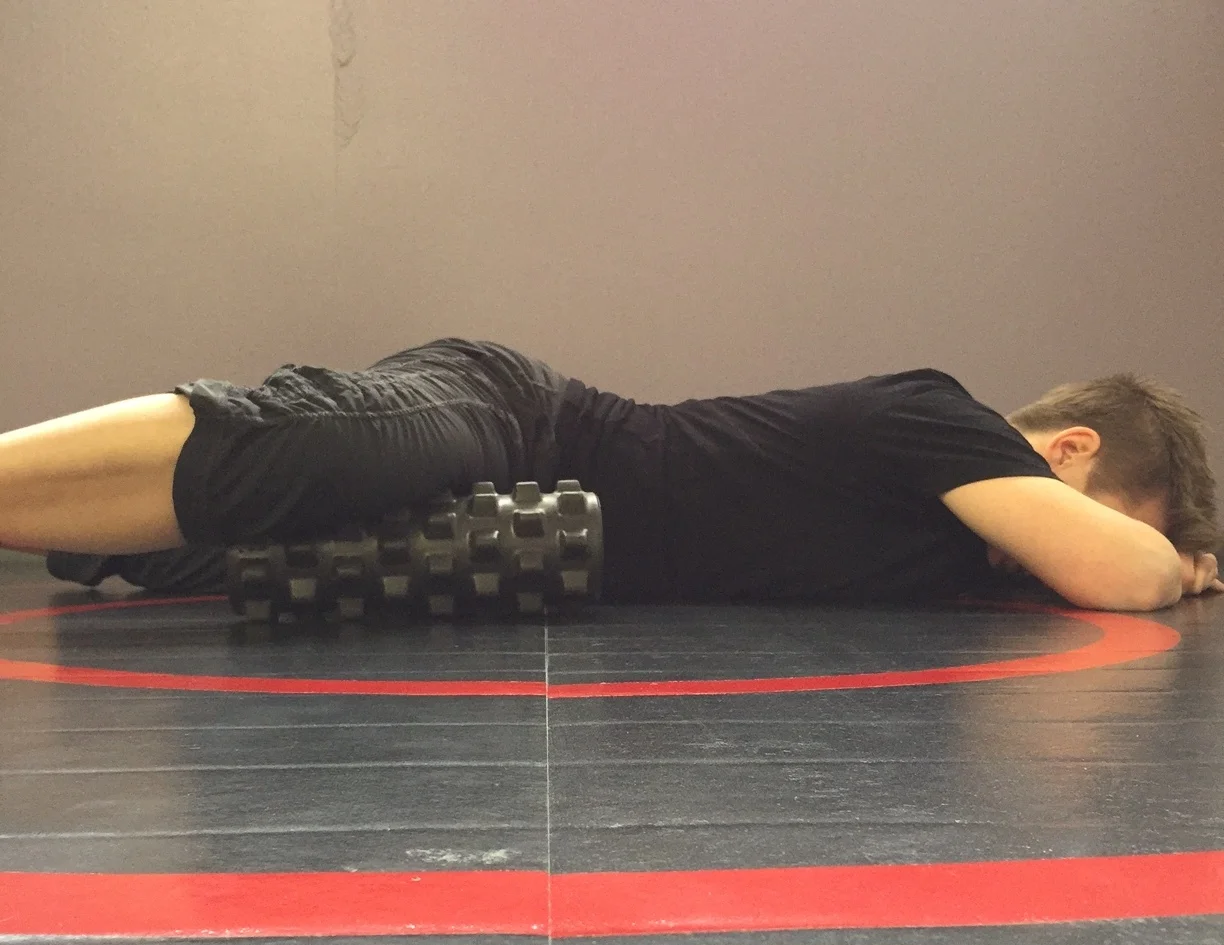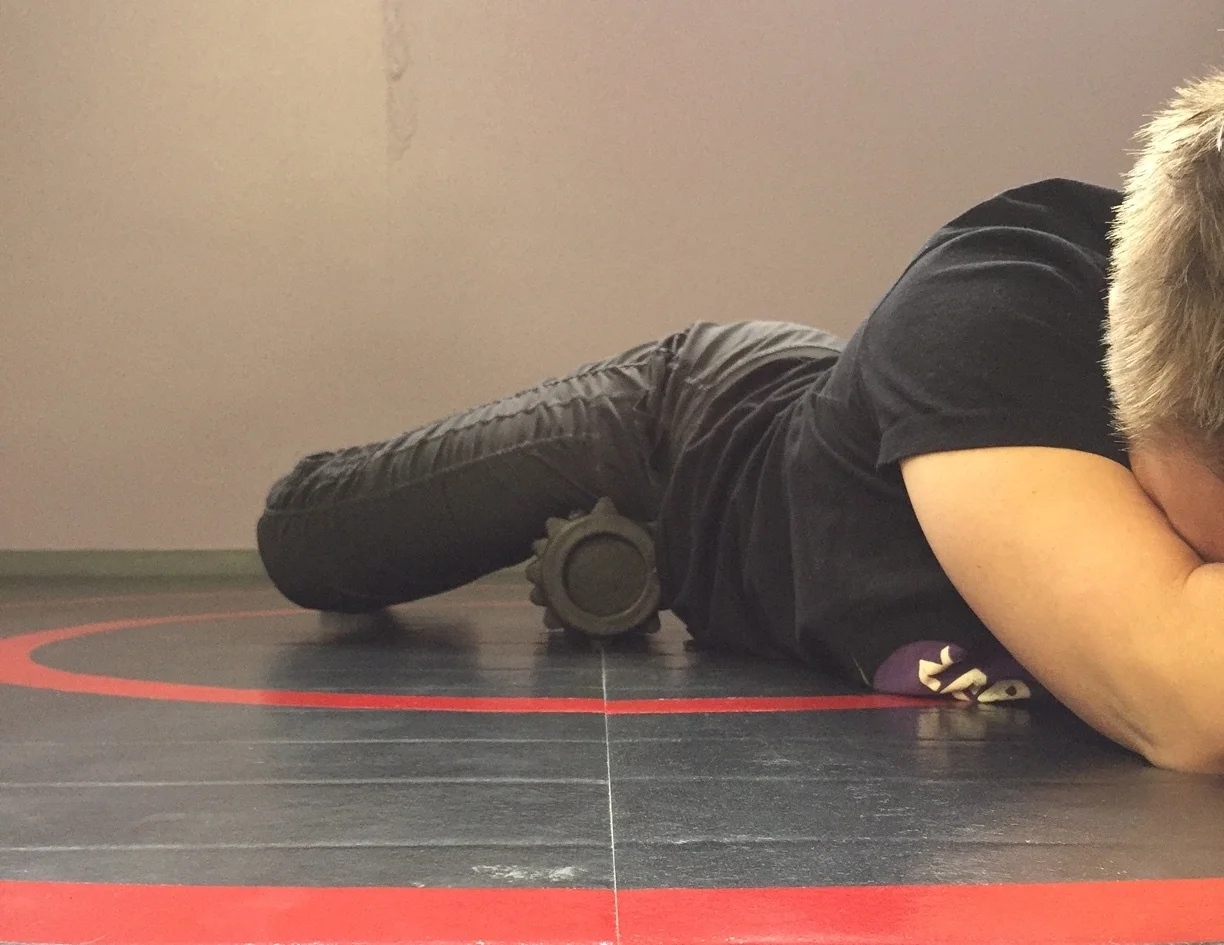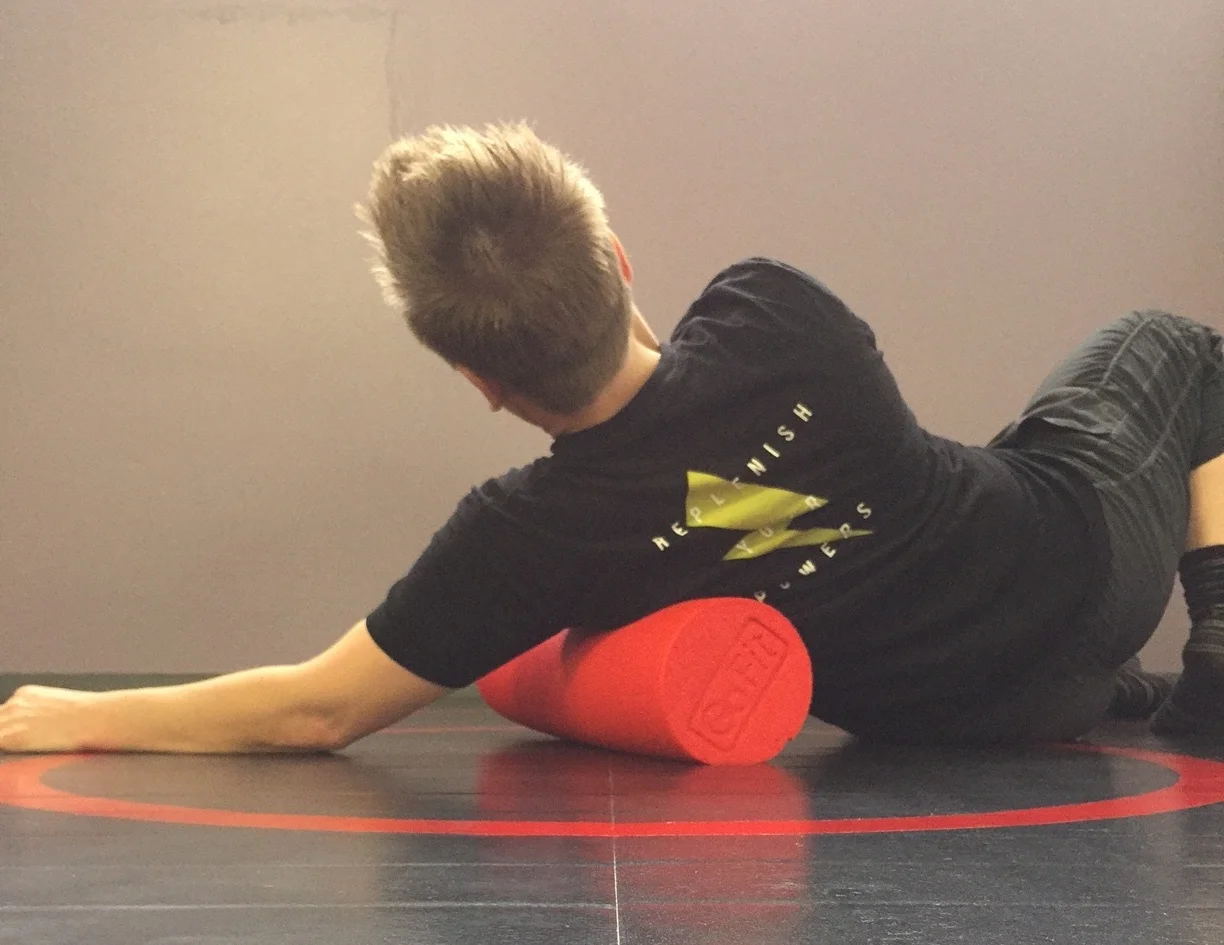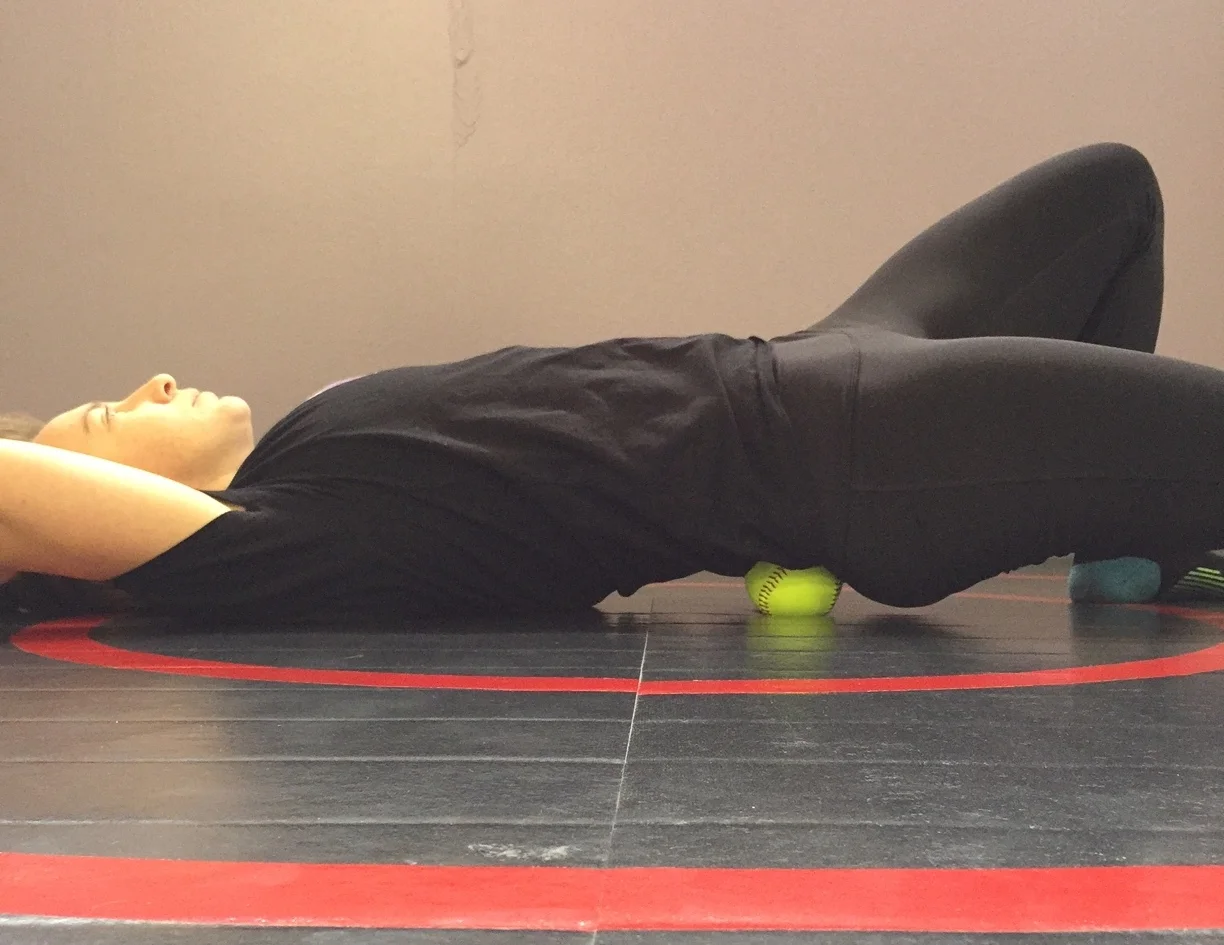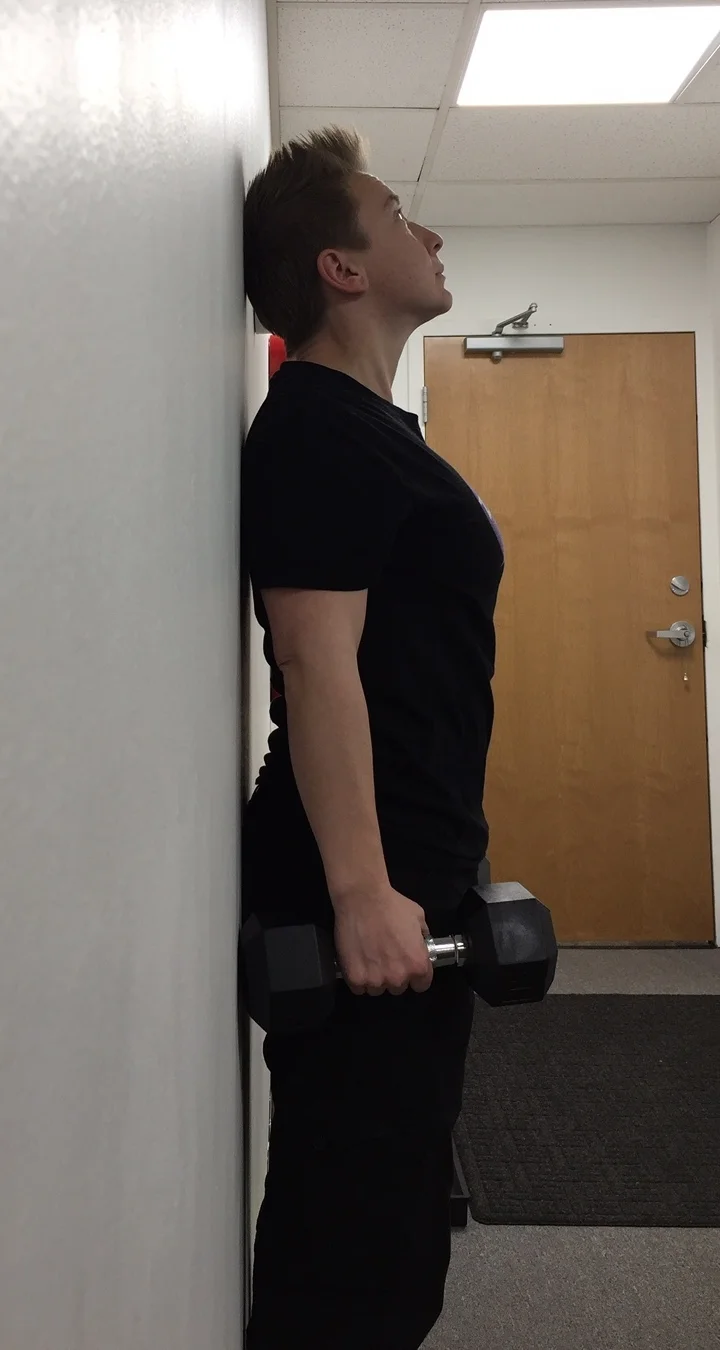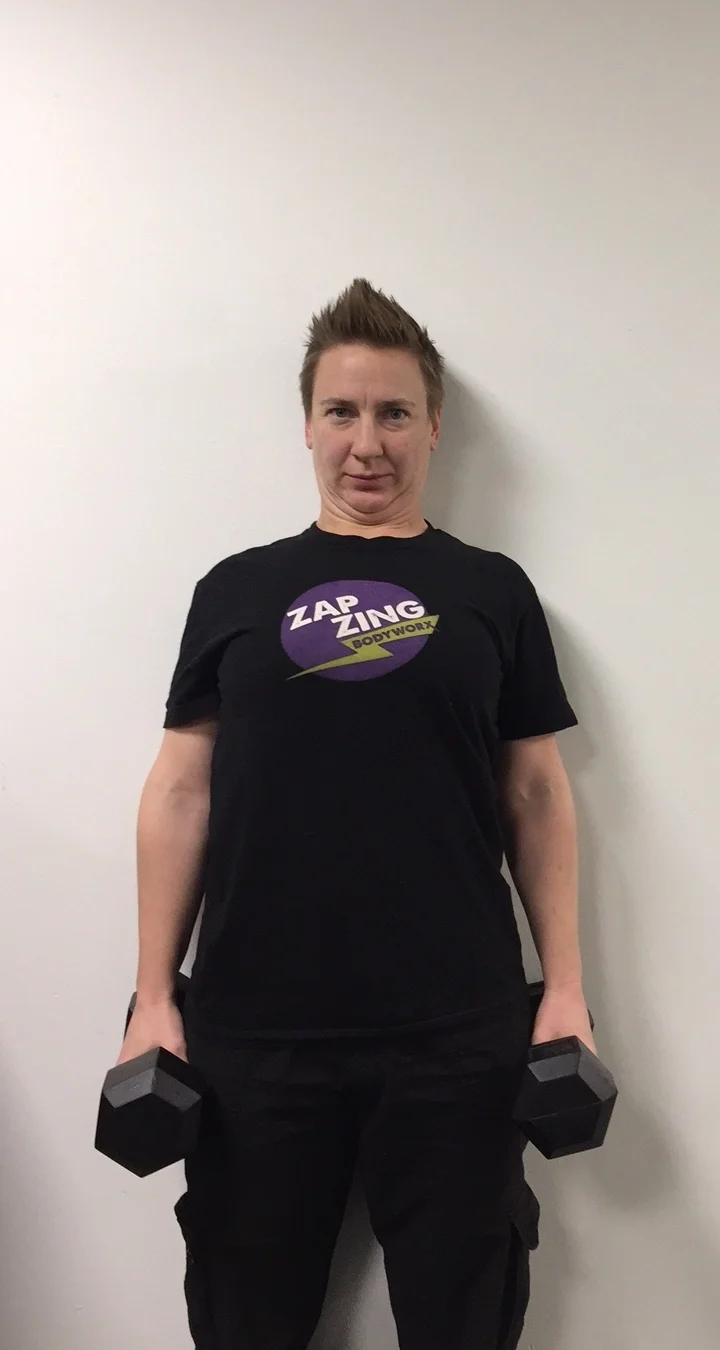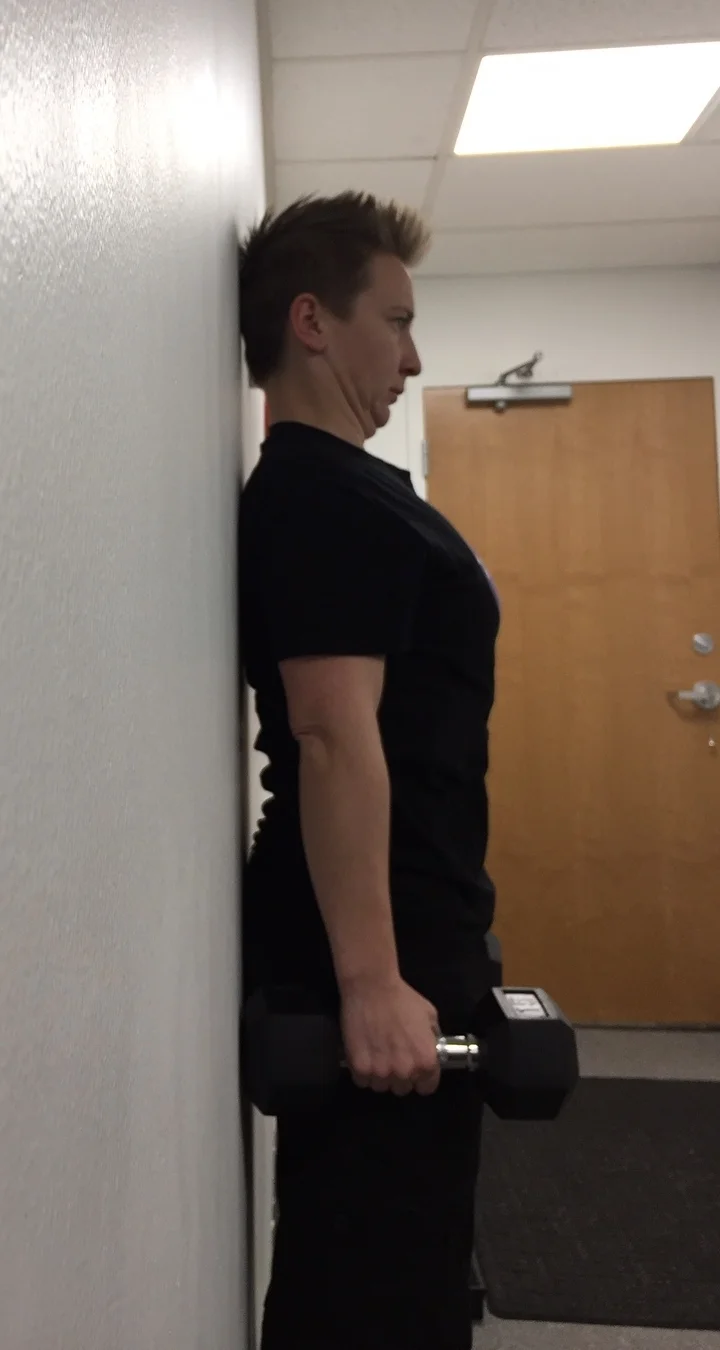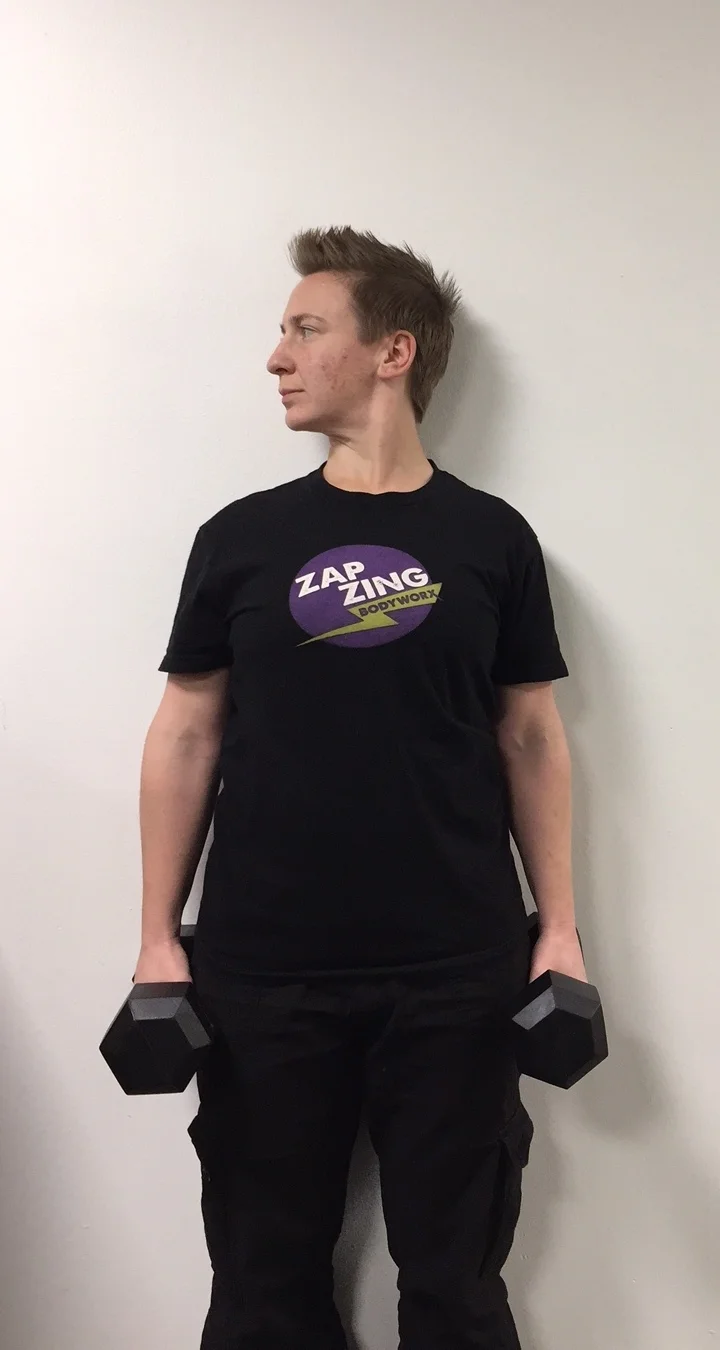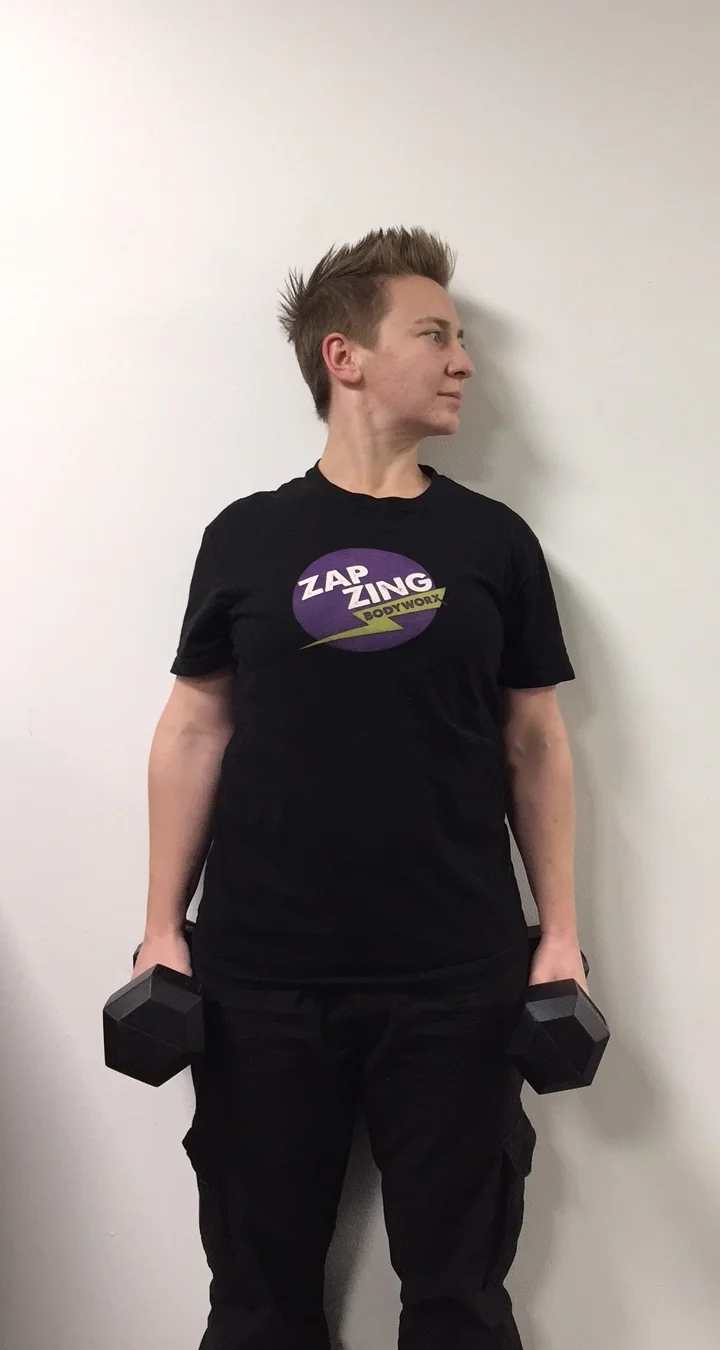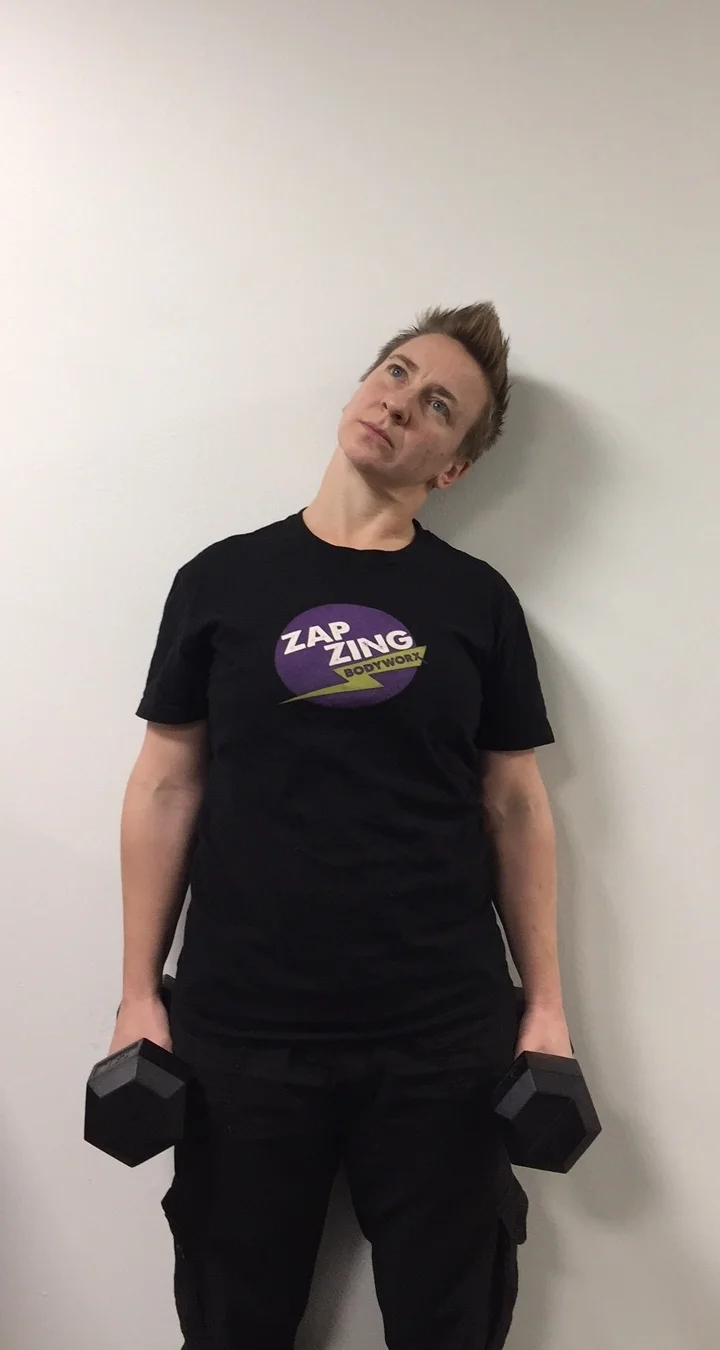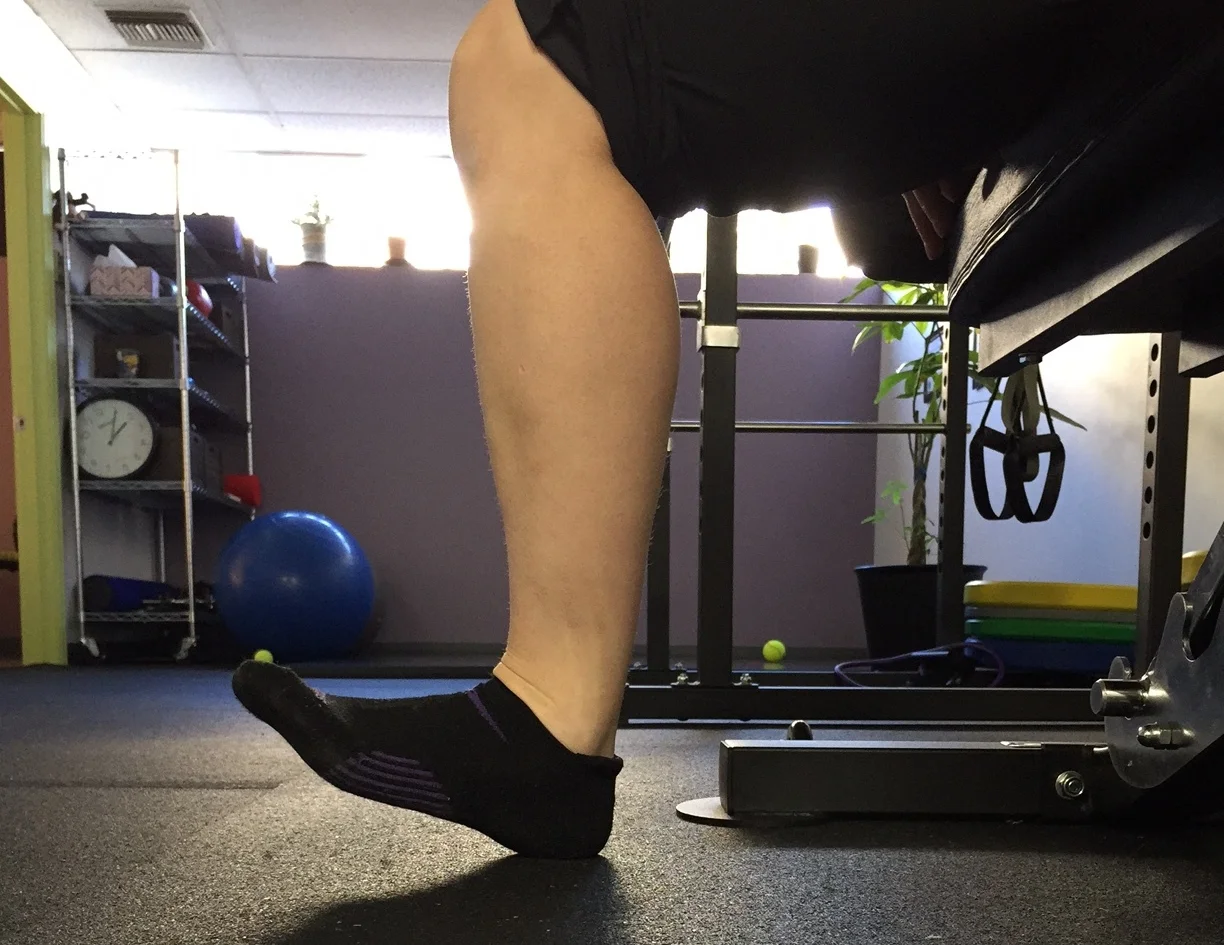AT-Home regeneration!
The exercises, muscle-work, and movements shown below are intended for you to do on your own time to help regenerate and restore your powers!
General Rules
it takes time to unwind tight muscles and work out knots, adhesions and scar tissue. plan to spend anywhere from 3-10 minutes on a muscle at a time!
muscle work of any kind may cause you to feel tenderness, aches, tingling, or other sensations, in both the immediate area of work as well as surrounding areas (referred pain). This is common, and should stop when you stop the work.
Stop immediately if you experience any sharp, shooting, or intolerable pain.
And finally, this is a reminder that we are not doctors. Our scopes of practice allow us to teach commonly accepted techniques on how to sustain healthy movement and living. The techniques, exercises, and our treatments are not intended to replace of any medical advice or diagnose, prevent, or treat disease.
Psoas Release
Lay on your stomach and place a softball underneath you, just below your ribs and to the right of your belly button. Relax your body and let the softball 'melt' into your muscles. Stay here for about 3 minutes, then move the ball down (about the distance of the ball's circumference) and hold again for 3 minutes. Keep moving the ball down as low as you feel comfortable. When you reach your furthest point, move the ball back to the top and to the left of your belly button, and repeat the process.
What can working on your psoas help with?
low back pain
cramps
indigestion
increase in hip flexing strength
increase in foundational core strength and stability
TFL Release
Lay on your side with your bottom leg straight, and place a lacrosse ball underneath your TFL. (Your TFL can generally be found between your hip bone and the crease formed when you lift your leg.) Bend your top leg 90 degrees and rest your knee on the floor - this creates a better angle to reach the TFL. Stay here for about 3 minutes.
What can working on your TFL help with?
low back pain
knee pain
foot pain
increase in knee mobility and stability
increase in lateral movement and strength
Obliques/Quadratus Lumborum
Lay on your side and place a softball underneath your body, in the space between your hip bone and lower ribs. This can be a sensitive area, so start out at about 30 seconds, and then switch to your other side. Go back and forth between both sides, spending about 5-10 minutes in total.
What can working on your obliques/quadratus lumborum help with?
low back pain
increase in balance
increase in foundational core strength
Teres
Lay on your back and place a tennis or lacrosse ball underneath the u-shaped area surrounding your armpit. As you find tender spots, hold on each spot for 3-5 minutes.
What can working on your teres muscles help with?
shoulder/rotator cuff pain
tingling/numbness in fingers
elbow pain
increased shoulder mobility
Serratus Anterior
Lay on your side and place a tennis or lacrosse ball where your scapula meets your ribs. Move the ball up and down the length of your scapula, finding tender spots and knots. Stay on each spot for 3-5 minutes.
What can working on your serratus muscles help with?
shoulder/rotator cuff pain
tingling/numbness in fingers
elbow pain
increased shoulder mobility
Adductors
Two methods are pictured, with a bodywork tool, and a foam roller.
Lay on your side and using a bodywork tool, place the tip on your bottom leg, approximately 1-2 inches below your groin, in the mid portion of your leg. Using your top leg, apply downward pressure and hold.
If using a foam roller, lay on your belly and angle one leg out to the side. Place the foam roller underneath your inner thigh, and roll until you feel tenders spots. Hold tender spots until you feel muscle release.
What can working on your adductors help with?
low back pain
knee pain
groin pain
Latissimus Dorsi
Using a foam roller, lay on your side and place the foam roller underneath your ribs, just below your scapula. Scrape your body forward (think you are pushing your skin backwards) and maintaining that pressure, lean backwards onto the foam roller. This method allows you to apply better pressure to the muscle. Stay in this position for 3-5 minutes or until you feel muscle release.
What does working on your lats help with?
back pain
tightness in shoulders
increase in pulling strength
Gluteus
Lay on your back and place a tennis, lacrosse, or softball underneath the top portion of your buttocks (where it is less squishy, but below the ilium or bony portion of your lower back). On the side that the ball is located, your leg should be relaxed, and with the opposite leg bend your knee so that your foot can rest flat on the floor. This position allows you to control the amount of pressure you apply by dropping or holding up your hip. Hold this position for as long as you can or until you feel release.
What does working on your glutes help with?
low back pain
hip pain
leg pain
sacrum pain
increase in back extension strength
increase in mobility and stability
Paraspinals
Lay on your back, and using two balls (tennis or lacrosse), place each ball on either side of your spine, starting at your thoracics (where your back starts to arch). Hold this position for a few minutes, then move the balls further up your spine and hold again. As you relax into the balls, move your arms out and over your head while maintaining contact with the ground, as if you were making 'snow angels'. Aim for ten slow repetitions.
What does working on your thoracics help with?
low back pain
hip pain
improved posture
increase in back extension and strength
increase in mobility and stability
increase in shoulder mobility
Chest Openers
While standing, bend your elbows 90 degrees with palms facing up. In one movement, lift your chest upward while you pull your elbows down and backward, as if you can make your elbows touch behind your back. Hold for 5 seconds, then relax. Repeat 10 times.
What does performing chest openers help with?
headaches
low back pain
improved posture
increase in back extension and strength
increase in mobility and stability
increase in shoulder mobility
Yes, No, Maybe!
Stand against wall with heels, butt, upper back, shoulders, and head against wall. Hold dumbbells, let them hang at your sides. Hold each position for 5 seconds before switching, and do each side 10 times before moving on: 1) (as in nodding “yes”…) Move head all the way up, and then all the way down (try and flatten neck against wall/get double chin action going!). 2) (as in shaking head “no”…) Turn head all the way to left, then all the way to the right. 3) (as in nodding “maybe”…) Tilt head, trying to bring left ear to left shoulder, then right ear to right shoulder. Avoid shrugging shoulders!
What does performing Yes, No, Maybes! help with?
headaches
low back pain
improved posture
increase in back extension and strength
increase in mobility and stability
increase in shoulder mobility
Bridges
Lay on the floor with your knees bent and feet flat on the ground. Squeeze your glutes and lift your hips off the ground, trying to get your body in line from shoulders to knees. Hold for five seconds then lower. Repeat 10-15 times.
What does performing bridges help with?
improved posture
strengthen glutes, lower back muscles
corrects muscle imbalances
See General Rules, back to top
Hip Hikes
Standing on a stable step or block with good posture, maintain a neutral pelvis and let your other leg hang free. Slowly raise and lower the hip of your hanging leg. Your standing leg should be still, the knee can have a slight bend but the knee should not be moving to lift your hip. Work on one side 10-15 reps before switching sides.
What does performing hip hikes help with?
knee pain
increased hip mobility and strength
overall stability
Superheroes
There are three phases. Remember to focus on your lower back muscles, not your glutes or hamstrings! All on your belly:
1) Raise your left upper thigh off the ground just slightly. Hold for five seconds, repeat ten times. Switch to other leg for ten reps.
2) As this gets easier, raise your left arm while raising your right leg, hold for five seconds, then lower and switch sides. Repeat ten times.
3) Raise both arms and thighs off the ground, hold for 10-20 seconds, then lower. Repeat ten times.
What do superheroes help with?
low back pain
hip pain
leg pain
sacrum pain
increase in back extension strength
increase in mobility and stability
Shin Lifts
Sit on a chair with your foot flat on the ground. Lift your foot upwards as high as you can while keeping your heel on the ground. Hold for five seconds, then lower. Repeat ten times before switching to other foot. Once this becomes easy, you may add resistance using a band.
What can shin lifts help with?
reduce shin splints
improve squat form
improve posture
Leg Extensions
Sit in a chair with your feet on the ground and your shoulders and back against the back of the chair. Flex your right foot up so that your toes are pointing back towards you, then lift your foot upwards until your leg is fully extended. You want to feel a squeeze in the muscles immediately above your knee, or in other words, try to lift your kneecap. Hold this position for five seconds, then lower. Repeat 10-20 times, then switch legs.
What do leg extensions help with?
knee pain
leg pain
tight hamstrings
increase in mobility and stability
Extend so that you feel the squeeze of your muscles just above the kneecap.
Single Arm Row
Place one knee and hand on a bench, with the other leg firmly on the floor and out to the side. Look up at the wall in front of you and arch your back. Move your working shoulder (the shoulder on the same side of your standing leg) down and back, or inwardly rotate your scapula, and at the same time engage your obliques to move your hip towards your shoulder. With your scapula and hips engaged, pull your elbow up, scraping your elbow against your ribs. Hold this position for 1-3 seconds, then lower, relaxing your hips, shoulder, and scapula.
The focus is to retract your scapula and engage your obliques before you pull up. This motion will help to pinpoint and activate your lower lats. Perform this exercise slowly, and reset every time. Recommended 10 reps per arm, with as much weight as you can comfortably move with good form.
What do single arm rows help with?
increase shoulder/rotator cuff mobility and strength
reduce pain in shoulder/rotator cuff
strengthen back muscles
improve posture
